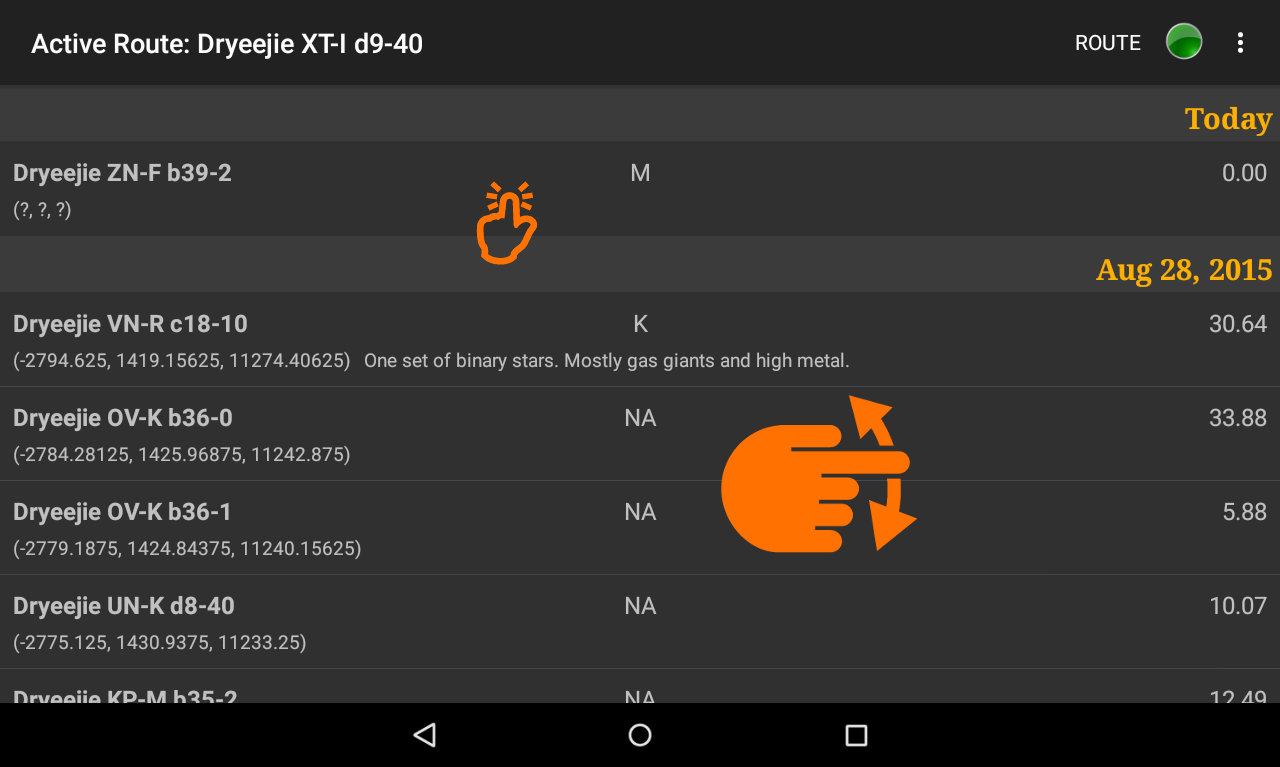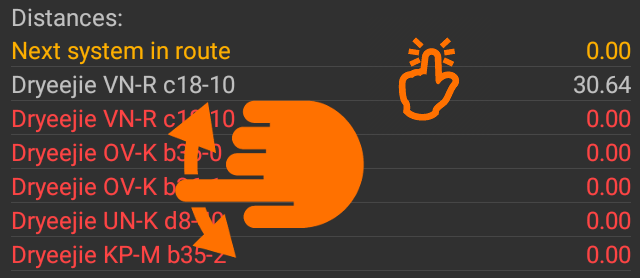Wiki
Clone wikianddiscovered / Home
Introduction
AndDiscovered is an Elite: Dangerous exploration tracking tool heavily influenced by Finwen's EDDiscovery.
AndDiscovered displays all systems the Commander has visited, and allows the Commander to update distances between systems and record notes about each system. Trilateration is performed for only those systems the Commander has visited directly, and will be performed every 15 minutes in the background. Currently AndDiscovered supports only a single Star Coordinator (EDSC). However, more coordinators will be supported in the near future.
Installation
AndDiscovered requires edproxy in order to fully operate. Edproxy is a parser that will read lines from the E:D log and event the line out to all registered listeners. Edproxy is written in Python which means that it will work on any platform, however, a special all-in-one build has been generated for Windows.
Usage Overview
Action Bar
The action bar has four valuable pieces of information: The title, or route destination, action button to setup the route destination, edproxy connection status icon, and the Settings. Use the Route action button to record your current routes final destination. This is an easy way to record your previous route since Elite: Dangerous cannot seem to remember a configured route. Once a route has been setup the title bar will change to present the current active route.


The edproxy connection state icon currently has three colors: red (edproxy could not be found), yellow (edproxy is being searched for, or a connection attempt is being made), and green (edproxy was found and a client connection established).

Settings
Use the Settings action bar menu item to configure the CMDR name and the number of days to display in the System List.

System List
The System List shows each system the Commander has been to. Each system is recorded in sequence as it is entered from E:D. How many systems are listed is controlled by the Display Days input. The list is up/down swipe-able as there may be more systems in the list than available space to display them.
The System List is grouped by the day at which the systems were recorded. Each system list entry will show: the name of the system, the main star (as represented in the Galaxy Map), the distance to the next system, the (x, y, z) position (if known), and a single line of the CMDRs notes (if any).
In order to view more details about a particular system just click on the system list entry.

System Information
Title
The title contains the system name and the current (x, y, z) position if known.
Celestial Bodies

The celestial bodies row allows for the CMDR to input the main stellar body for the system.
The CMDR may also configure how many stellar bodies are in the system, and what type of stellar bodies are in the system. The count and types should include the main stellar body. The list is horizontally scroll-able so that the CMDR may input numerous body types.
The final item in the row allows for configuration of the planetary bodies. The CMDR may input the total number of planetary bodies in the system. While the CMDR has free reign on what is considered planetary it will be easier to perform analytics on objects that are not Icy/Rocky moons. Thus CMDRs are encouraged to only count planets, or moons that are not Icy/Rocky. If a planet itself is Icy/Rocky then it should be recorded.
Distance List

The distance list contains all systems that have a recorded distance, or direct CMDR visit link, with the current system. For the system the CMDR is currently in the top row will be a Next system in route item. The CMDR may input a distance for this special entry, and on the next jump the new system will be automatically filled in.
Any system with a distance, or direct CMDR visit link, will be colored grey-white. The Next system in route special entry will be Elite: Dangerous orange.
The final special system listed is a Reference System. In order to be listed as a reference the system must have been visited by the CMDR, and have a known (x, y, z) position recorded by the Star Coordinator. These systems are currently colored red (subject to change). The CMDR is encouraged to obtain the distance from the current system to the reference system in order to compute a galaxy position.
Computing System Position
When the CMDR inputs a new Reference System distance the Star Coordinator will be contacted. The calculation may take some time so the position in the title will be updated with Calculating. If the Star Coordinator cannot find the system position then the position will be updated to let the CMDR know why. If the CMDR is having to enter 20+ distances then most likely one of those distances is incorrect. Currently the application is not able to provide the CMDR with this information. Thus if the CMDR is having to put too many distances such that it does not feel right please go to EDSM.
Notes
The CMDR is free to input any notes they desire.
Star Coordinators
AndDiscovered uses a Star Coordinator to retrieve already recorded distances and systems. Currently AndDiscovered only uses EDSM. CMDRs may use EDSM without registering, however by registering you may get some useful information about you exploration activities.
Updated